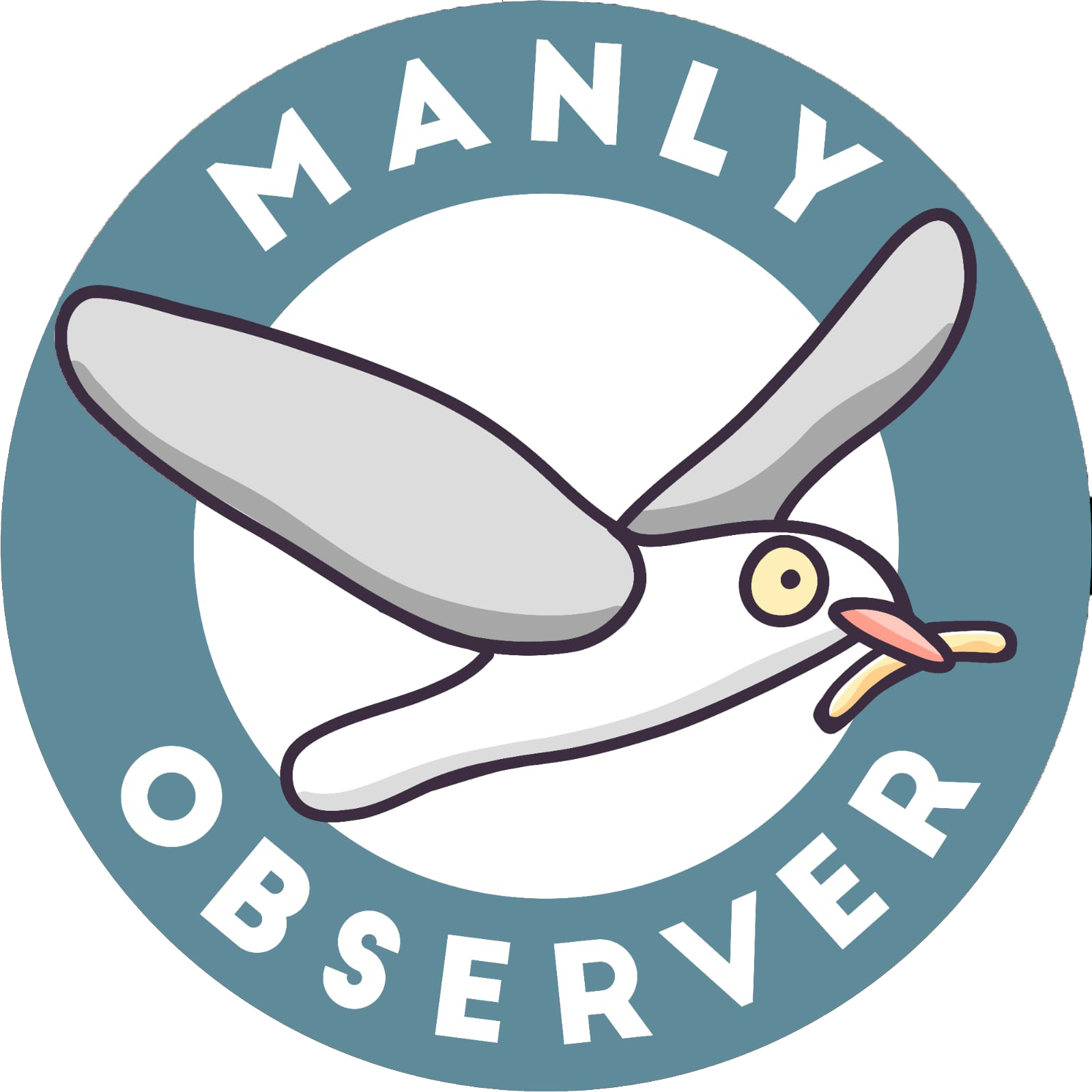In 2021 mixed-media artists Lucy Barker and Jane Gillings participated in an artists’ residency at the Q Station on Manly’s North Head – Lucy was an exhibitor in the Les Sculptures Refusées exhibition, and Jane was invited to join her for company and creative collaborations.
During their creative sojourn, like something out of an historic Girls Own Adventure Paper story, they stumbled upon a secret cavern on the shoreline. But this Aladdin’s Cave wasn’t filled with gold trinkets and magic lamps among the marine materials in the narrow grotto, but debris and detritus carried in on the currents.
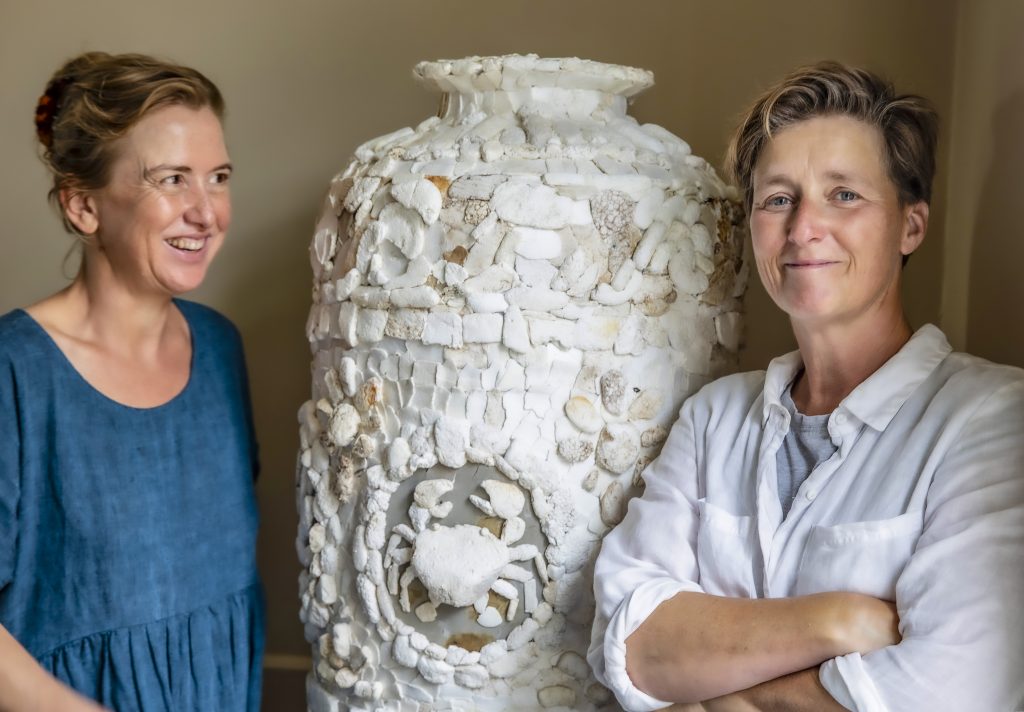
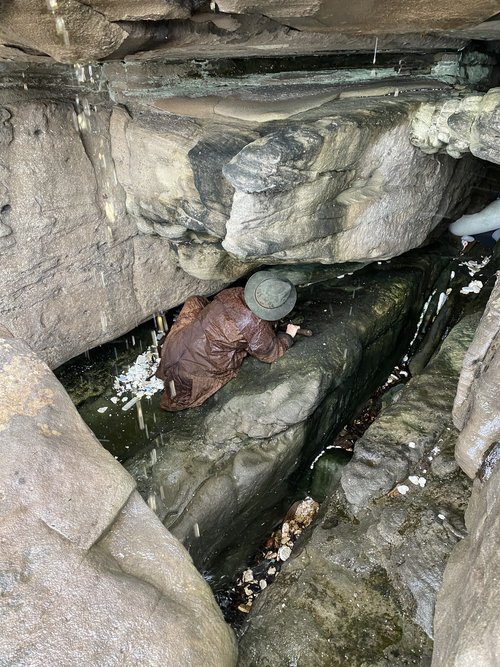
This consisted, primarily, of polystyrene foam from broken eskies, ship buoys and battered bodyboards, plus plastic bottles, a bird-pecked yoga mat, and wayward tennis balls dropped by dogs.
However, what may be junk to the layperson can be good as gold to two talented artists with extraordinary imaginations – who also wanted to make a statement about the harm plastic waste in the sea can cause marine life.
After bagging and hauling the pieces of pollution up to the former medical staff living quarters of the Quarantine Station, the duo set about cleaning, sculpting and repurposing it. They eventually filled three rooms in an interactive exhibition, titled Poly.Glut, consisting of Discovery Room, The Cave and The Gentleman’s Study.
Inspiration
“We have approached the material from a few different perspectives,” Jane explained. “One is from a curiosity regarding the resemblance that much of the garbage has to natural objects, such as rocks, seeds, insects, etc. One of the alarming issues regarding floating ocean detritus is that wildlife mistake it for food. This deception is often deadly and we have created a hands-on “discovery” room that challenges the audience to not be deceived by carefully curated natural and unnatural objects.
What inspired the mock Victorian-era naturalist’s study?
“The Victorian ‘gentleman’s study’ reflects the colonial fashion for collecting natural history specimens from foreign lands,” Jane elaborated. “Historically, these items were taken without permission or regard for their significance to the local natural or cultural environment.”
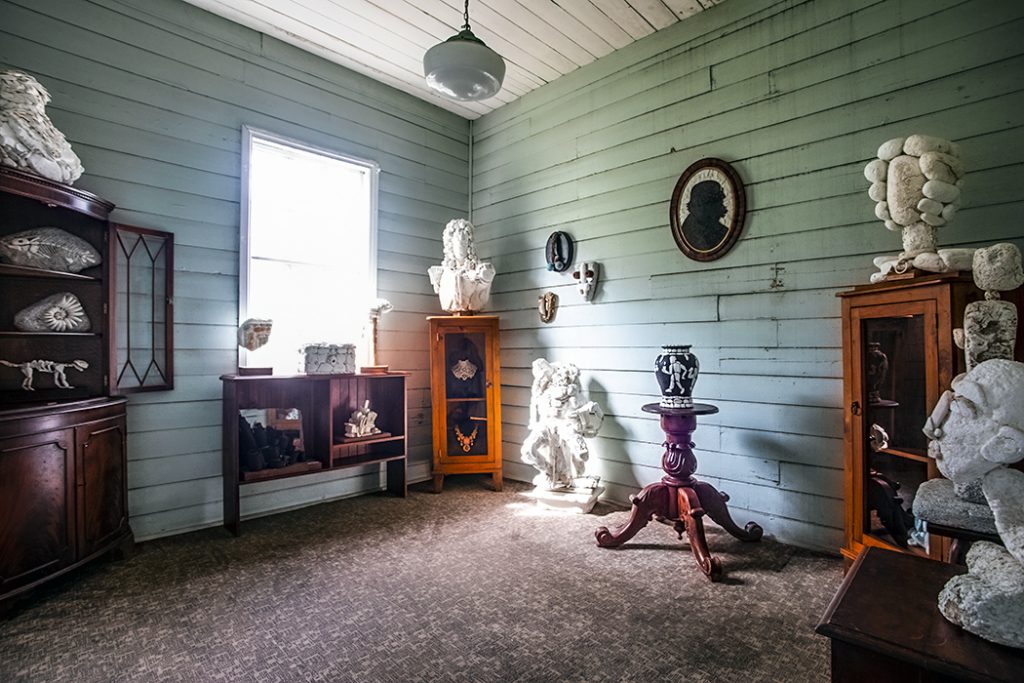
A silhouette – of writer Thomas Keneally – also graces the wall. How did that eventuate?
“The Tom Keneally work is a Victorian silhouette made from a piece of black yoga mat we found with styrofoam coffee cups as the white background,” Jane revealed. “He sat for me in the sun as I traced his shadow onto a template which I then transferred to the mat. He has an iconic profile.
Artistically, what are their favourite pieces?
“One of the favourite works and most commented on is Lucy’s barristers wig made from polystyrene,” Jane considered. “It represents the lawmakers who should be finding solutions to the issues around waste and how we should be managing it by reducing polluting products, excess packaging and other environmental nightmares. Fittingly, the wig has been sold to an environmental lawyer!”
“Another favourite is Jane’s rendition of a marble Laocoon from Greek and/or Roman mythology,” Lucy added, “wrestling his large polystyrene snake!”
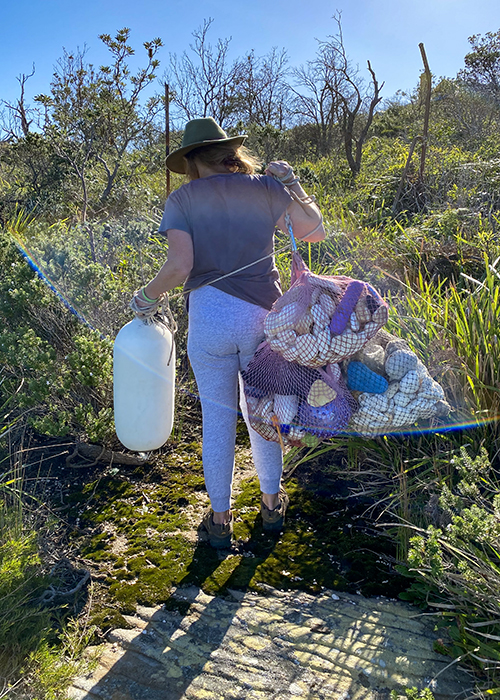
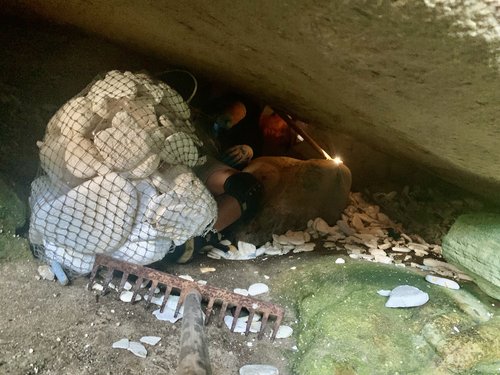
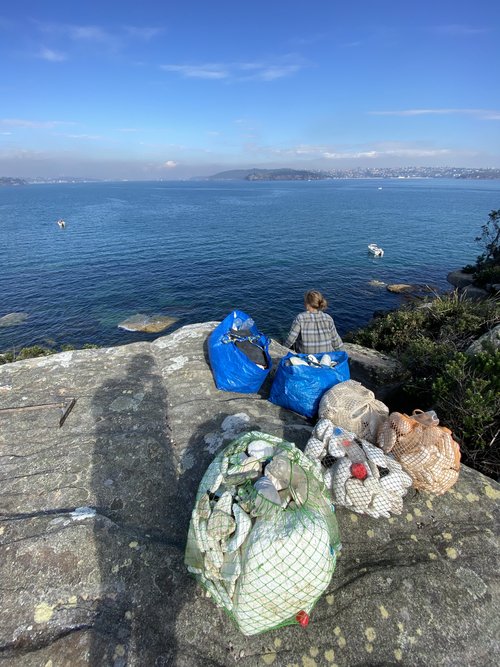
Where next for the sculptures, have they been approached by other venues to host them?
“We are hoping to travel the show to regional galleries,” Lucy said, “particularly those on the coast or large river systems, to help spread the word on the range of issues related to Polystyrene use.”
“Quite a few of the actual sculptures have been sold, but we are hoping to reinstall the work elsewhere to highlight the issue of ocean pollution,” Jane added.
“People just need to think about their purchases and consider if there are alternatives to single use items or if there are more sustainable ways to get what they want… There are no hard borders in the ocean. And just because you can’t see it, doesn’t mean it’s not out there. Sometimes it’s just hiding in a cave.”
Poly.Glut
The Hospital Precinct, Q Station, North Head, Manly
Opening hours:
Fri 4 Feb 1pm – 7pm
Sat 5 Feb 1pm – 7pm
Sun 6 Feb 10am – 7pm
Jane Gillings
Lucy Barker
https://www.lucybarker.com.au/
Poly.Glut artworks for sale
https://www.lucybarker.com.au/store/polyglut-works
